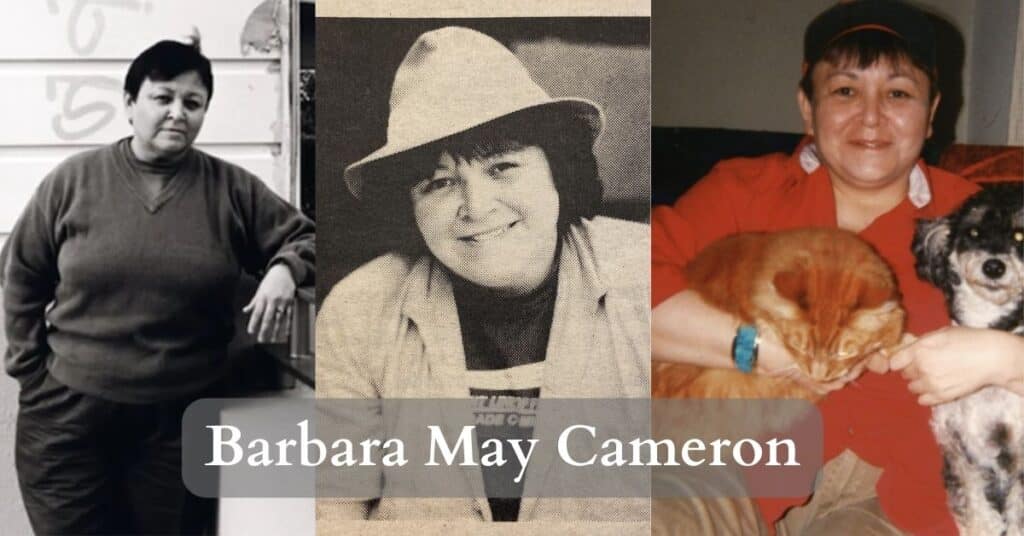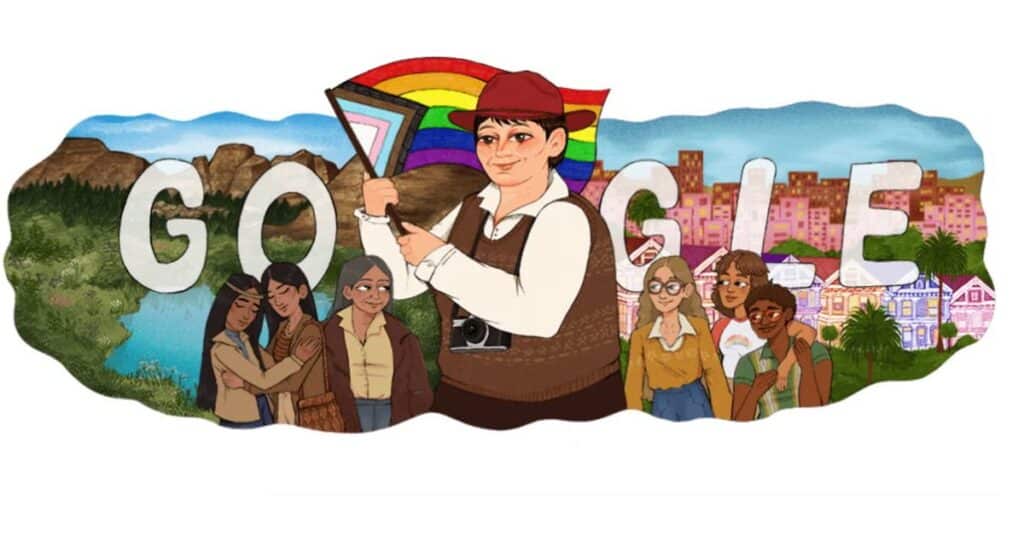Barbara May Cameron, also known as Wia Washte Wi, was a remarkable activist and advocate. She was born on May 22, 1954, and belonged to the Standing Rock Sioux Tribe’s Fort Yates band.
Cameron dedicated her life to fighting for equality and raising awareness about health issues. She was particularly known for her work in advocating for LGBTQIA+ inclusion and addressing public health concerns.Top of Form
Barbara May Cameron
Barbara May Cameron, also known as Wia Washte Wi, was a member of the Standing Rock Sioux Tribe’s Fort Yates band. After completing her education, she pursued photography and film at the Institute of American Indian Arts in Santa Fe, New Mexico.

Her journey as an advocate and activist began when she relocated to San Francisco in 1973.
She fearlessly championed LGBTQIA+ inclusion within the Native American community and addressed racism in queer spaces. Barbara’s impact extended globally as she contributed to public health initiatives and was appointed to prestigious committees. Her legacy continues to inspire and educate, leaving a lasting imprint on equality and health awareness.
Achievements and Awards:
Barbara May Cameron’s legacy is marked by her unwavering dedication to advocacy and public health. As the executive director of Community United Against Violence, she fearlessly fought for LGBTQIA+ inclusion within the Native American community and addressed racism in queer spaces. Her commitment to enhancing human well-being extended to supporting victims of hate crimes and domestic abuse.

In recognition of her remarkable efforts, Barbara was appointed to key positions within the San Francisco community, including the Citizens Committee on Community Development and the San Francisco Human Rights Commission. Her global influence was evident when she was appointed to the United Nations Commission on the Status of Women, highlighting her impact on promoting equality on an international scale.
Barbara’s involvement in public health initiatives further showcased her dedication to improving communities’ overall health. Through collaboration with organizations like the San Francisco AIDS Foundation and the American Indian AIDS Institute, she contributed significantly to addressing critical health issues, particularly within marginalized communities.
As a consultant for prestigious institutions such as the US Department of Health and Human Services and the Centers for Disease Control, Barbara played a crucial role in shaping AIDS and childhood immunization programs, leaving an enduring legacy in the field of public health advocacy.
Notable among her achievements are:
Barbara May Cameron’s achievements were noteworthy and impactful:
- Co-founding the pioneering Gay American Indians, the first gay American Indian liberation organization.
- Leading the Lesbian Gay Freedom Day Parade and Celebration for five consecutive years from 1980 to 1985, showcasing her leadership and dedication to LGBTQIA+ rights.
- Receiving the prestigious Harvey Milk Award for Community Service in 1992, recognizing her outstanding contributions to her community.
- Being the inaugural recipient of the Bay Area Career Women Community Service Award, highlighting her commitment to service and advocacy.
- Collaborating with the International Indigenous AIDS Network to engage in AIDS education, particularly reaching various Indian reservations across the United States.
- Founding the Institute on Native American Health and Wellness, with a pioneering project focusing on publishing the works of Native American women writers, thereby amplifying indigenous voices and perspectives.
Death:
Barbara May Cameron’s personal life was as impactful as her advocacy work. She shared a loving 21-year relationship with Linda Boyd, and together they raised a son, Rhys Boyd-Farrell. However, tragedy struck on February 12, 2002, when Barbara passed away from natural causes at the age of 47.
Despite her untimely passing, Barbara’s creative spirit lives on through her unfinished screenplay, “Long Time, No See.”
This work stands as a testament to her enduring creativity and passion, encapsulating her commitment to storytelling and leaving a lasting legacy that continues to inspire others.
Frequently Asked Questions
Who was Barbara May Cameron?
Barbara May Cameron was a Hunkpapa Lakota activist known for her advocacy for LGBTQIA+ inclusion, human rights, and public health. She dedicated her life to fighting for equality and raising awareness about health issues, leaving a lasting impact on her community and beyond.
How did Barbara May Cameron contribute to public health?
Barbara May Cameron made significant contributions to public health through her involvement with various organizations. She worked with the San Francisco AIDS Foundation, the American Indian AIDS Institute, and the Institute on Native American Health and Wellness, focusing particularly on AIDS and childhood immunization programs. Her dedication to public health initiatives aimed to improve the well-being of marginalized communities, leaving a lasting impact on health outcomes.
When did Barbara May Cameron pass away?
Barbara May Cameron passed away on February 12, 2002, at the age of 47, from natural causes. Despite her untimely death, her legacy as an activist and advocate continues to inspire and educate others, reminding us of the importance of fighting for equality and public health.
Final Words
Barbara May Cameron’s life exemplified resilience, compassion, and an unwavering dedication to equality and public health. Her pioneering efforts in advocating for LGBTQIA+ inclusion, addressing racism, and promoting public health serve as a beacon of inspiration for future generations.
Barbara left a lasting legacy that continues to guide and inspire those who follow in her footsteps. Her commitment to social justice and well-being has left an indelible mark on the world, reminding us of the importance of compassion, equality, and advocacy for a better tomorrow.

David has been writing about technology for over 5 years. He first started his career at many other tech sites, where he was hired right after graduating college with a degree in journalism.
At Tech, John cut his teeth writing news stories, how-to guides, and product reviews. His specialties included consumer electronics, smart home technology, and gaming. He quickly became known for his ability to explain complex tech in easy-to-understand terms and provide practical advice to readers.










